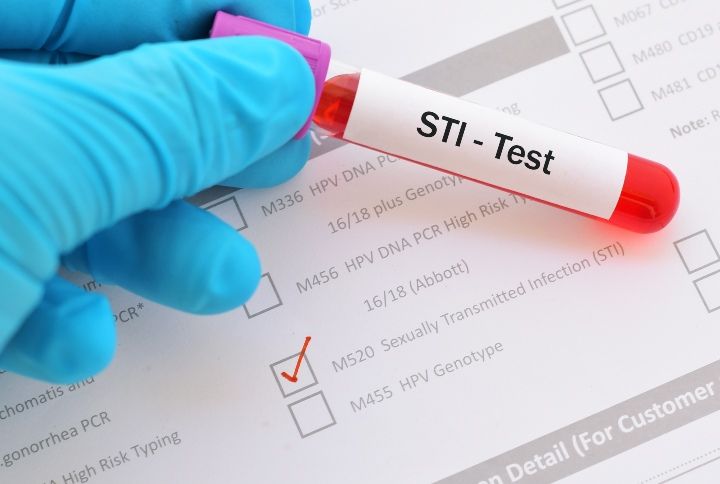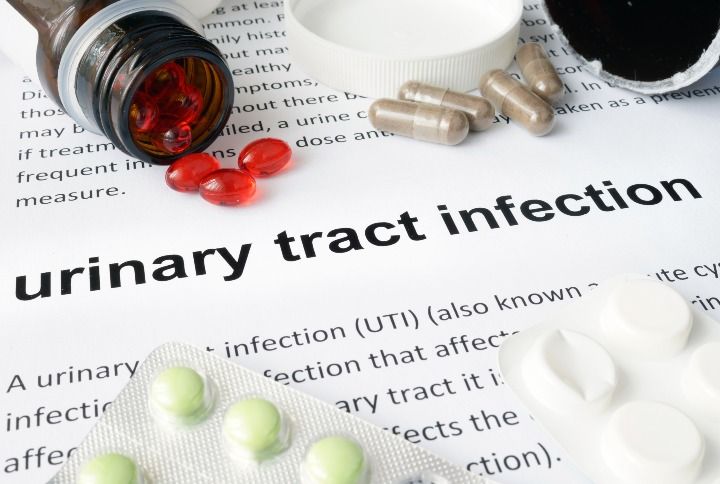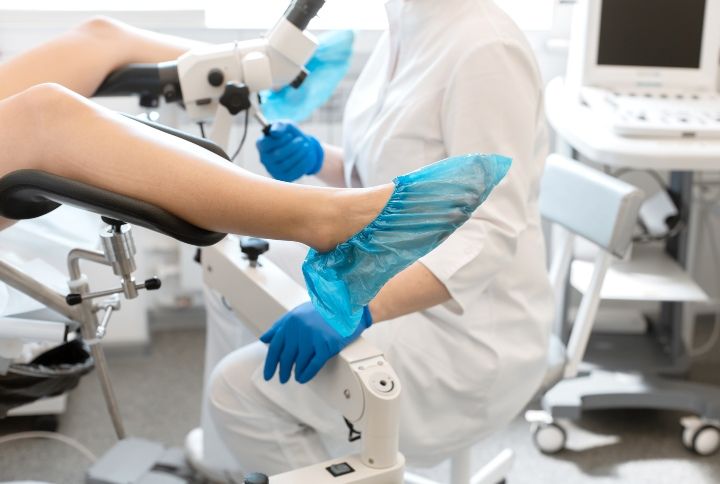Taking care of our genital health is crucial, especially when a majority of people still do not have proper knowledge about it. To get the right information about what UTIs and STIs are, how they are contracted, their symptoms, how to get tested, how to treat them, how to prevent them, and what complications to expect—we got in touch with Dr. Vaishali Joshi, a senior Obstetrician, and Gynaecologist at Kokilaben Hospital in Mumbai. She breaks down all of our questions we had about UTIs and STIs and explained them in layman’s terms and we thought we’d share it with you! Scroll down to read everything you wanted to know about UTIs and STIs, coming right from an expert.

What Is UTI?
UTI is an infection in any part of the urinary system which includes the kidney, bladder, and urethra. The bacteria enter the urinary tract and lead to symptoms like frequency and burning sensation while urination, strong-smelling urine, nausea or vomitting, muscle aches, or even pain in the lower part of the stomach. It can give rise to fever and rarely blood in the urine.
What Is STI?
Sexually Transmitted Infection (STI) or Disease (STD) or Venereal Diseases (VD) are infections transmitted from one person to another through sex including vaginal, anal, and oral sex, or non-sexual means like via body fluids or close intimate contact or from mother to child during childbirth and pregnancy.
Epidemiology
There are more than 1 million sexually transmitted infections (STIs) acquired every day worldwide as per World Health Organisation (WHO). It affects both men and women and unborn children in pregnancy and childbirth. The serious impact on long-term health is more in women and children.
Incidence
It is a silent public health epidemic affecting the young generation. The urbanisation, multiple sexual partners, ignorance and unawareness of safe sex practices has been the main reason for increased incidence.
Infective Organisms Causing STIs
STIs are caused by more than 30 different bacteria, viruses, and parasites, 8 organisms out of 30 are responsible for the most common STIs. Out of these 8 infections, syphilis, gonorrhea, chlamydia, and trichomoniasis are completely curable. The incurable STIs are hepatitis B, herpes simplex virus (HSV or herpes), HIV, and human papillomavirus (HPV). They are caused by viruses, but their symptoms can be modified with treatment.
Symptoms

Most of the women do not have any symptoms or have only mild symptoms that may not be recognised as an STI. In women, urinary passage and genital passage are in close proximity. This may be the reason women can get confused about the source of infection.
The symptoms can range from mild to severe illness presenting with high fever, foul-smelling vaginal discharge, and sudden pain in the tummy. The common symptoms may be:
- Painful sex.
- Pelvic pain.
- Pain while peeing—some women after 1st intercourse, can have a urine infection, also called ‘Honeymoon cystitis’.
- Bleeding in between periods.
- Heavy periods.
- Yellow or green vaginal discharge with fishy or bad odour.
- Ulcers or sores or warts on the genital area.
- Itching and redness in the genital area.
- Blisters or sores in or around the mouth.
Investigations Or Tests

STI
There is no simple test for diagnosing STD. A gynecological examination can help to diagnose a particular type of STI. The nature of the discharge, odour, microscopic examination of it, and visual changes in the cervix (neck of the womb) e.g. strawberry cervix characteristic of trichomoniasis STI can give a clue. Vaginal or cervical swabs, urine examinations can be sent for detection of organisms causing STIs.
Blood tests can help to diagnose viral STIs like HIV, Hepatitis B, and C.
UTI
The routine tests performed are urine microscopic examination and urine culture and sensitivity. This will pick up the type of bacteria causing UTI and the effective antibiotics to clear the infection. The sonography of the kidney, and bladder may be needed to look for after-effects of UTI.
Treatment

UTI
- Drinking plenty of fluids so that you flush out the toxins frequently.
- After urinating, wipe from front to back.
- Avoid deodorants, sprays, perfumes, etc in the genital area that can affect the urethra.
- Drink water to flush the bacteria and empty the bladder soon after intercourse.
- Wear cotton underwear and loose-fitting clothes to keep the area around the urethra dry.
- The most important fact is to complete the antibiotics course as incomplete treatment gives rise to recurrent UTIs and antibiotic-resistant infections in the future.
STI
- It involved immediate complete treatment, prevention, and behavioural counselling of the community.
- It’s important to diagnose it early so that treatment can be initiated immediately to limit the damage.
- A course of a combination of antibiotics needs to be completed and one needs to avoid sex till the completion of treatment.
- It’s important to treat current and past sexual partners for STIs to prevent re-infection and spread of the infection in the community.
STIs caused by chlamydia, gonorrhea, syphilis, and trichomoniasis are completely curable by antibiotics, usually with a single dose. Hepatitis B, Herpes, and HIV are not curable but their symptoms and course can be modified by antiviral medicines. Vaccinations are available for Hepatitis B and HPV STI which are proved effective against these infections globally.
Complications Of STDs
- Tubal damage after STI, particularly due to Chlamydia STI can give rise to the difficulty to conceive. Almost 1 in 10 women can have blocked or narrow or scarred fallopian tubes.
- Tubal ectopic pregnancy.
- Long-term pelvic or abdominal pain.
Prevention
‘Prevention is better than cure’ is 100% true in the management of STI infections. Primary prevention involving the community, targeting adolescent and young population is the key. The importance of safe sex, use of barrier (condom either male or female), and contraception in vaginal, oral, or anal sex should be stressed. A non-judgemental sex orientation and sex education should be an integral part of the growing process from adolescence to adulthood. Easy access to early diagnostic and treatment facilities, confidentiality, sexual contact tracing and a non-stigmatisation approach are keys to limit the prevalence of STIs.
Hope all of this helps you in taking care of your genital health better and becoming more aware of UTIs, STIs and everything around it. For more such articles, don’t forget to follow @missmalinilifestyle!

